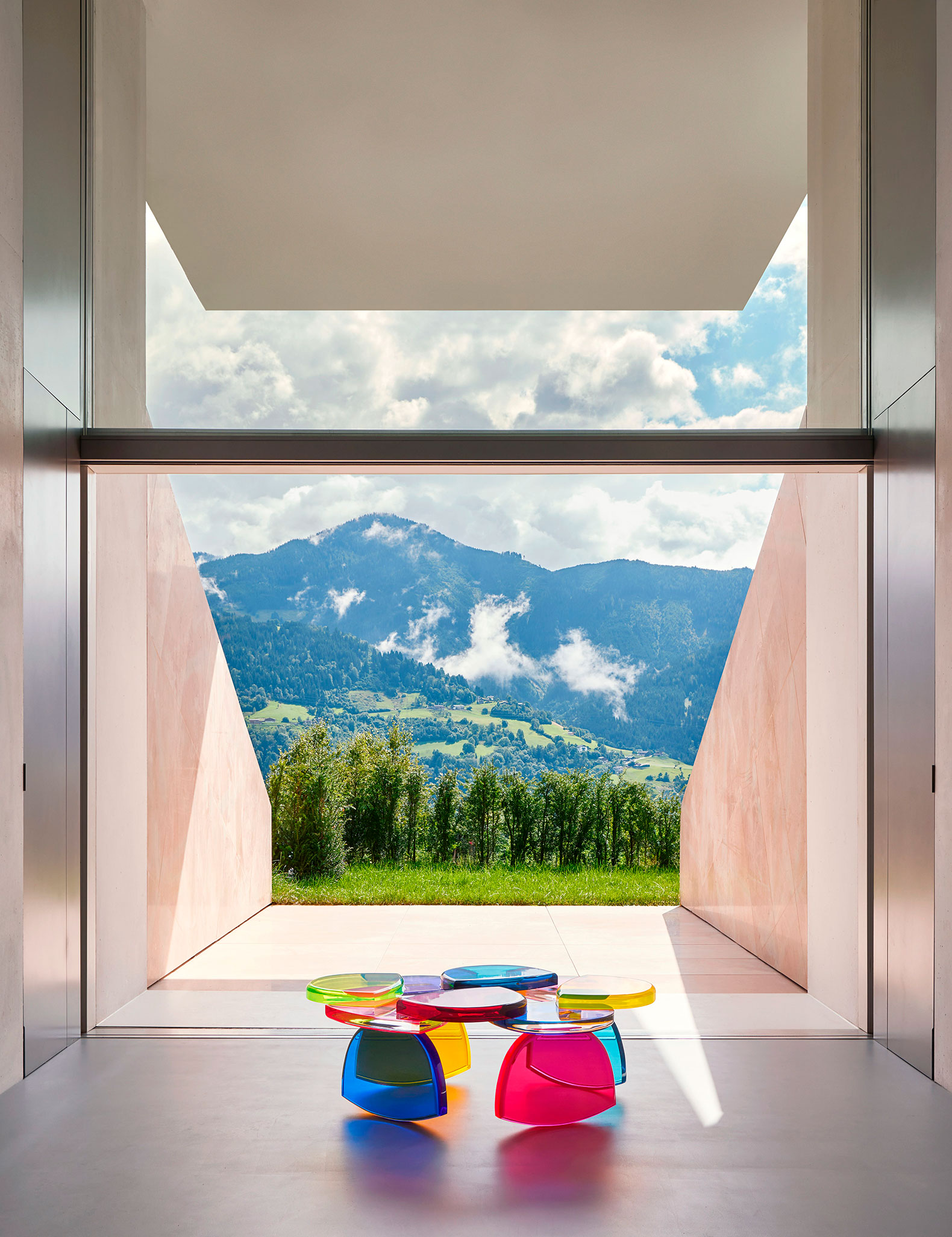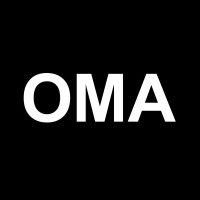
Circulation between the different levels of the house designed by OMA is carried out by means of a continuous staircase that extends underground, running through the different spaces that make up the house, where skylights and large windows create different environments and distribute the house according to the treatment of natural light.
Thanks to its white concrete cladding, the house establishes a dynamic dialogue with the landscape, making it stand out against the green of the hill in summer and camouflaging itself under the white blanket that covers it in winter. The white colour present throughout the house contrasts with the greenish colour of the transparent resin tiles that relate to the surrounding landscape.

Austrian House by OMA. Photograph by Pernille Roof and Thomas Roof / Art Sept NY.
Project description by OMA
I met the client at a digital conference in Munich – he asked us to design a house on a very narrow and steep site next to his sister’s house in Zell am Zee, the village where he had grown up.
Above ground, the zoning law suggested a 4-meter wide structure with a sloping roof descending the hill – but beneath the ground some additional volume was allowed. The issue then became how to create underground the conditions of daylight and view that were the attractions of the site.
The house is planned on four floors. A large, mirrored door enables entry from the top level. This floor is as an open space, covered by sawtooth skylights, extending outwards with a cantilevered terrace. A curtain separates a sleeping corner, equipped with bathroom amenities concealed into the floor to not obstruct the view. Transparent resin tiles let daylight descend to the floor below, where the family can get together in a more intimate space.

A sauna opens up to the living and dining room. Further down lie two twin guest suites adjoined by a double height sitting room that opens directly into the landscape. The lowest level organizes the house’s connection with the street and includes a storage space for ski equipment.
All floors are linked by a continuous flight of stairs that extends entirely underground. Above ground the house’s white concrete envelope establishes a dynamic relationship with its surroundings: in stark contrast against the green hill in summer; camouflaged entirely on a typical winter’s day.
















































